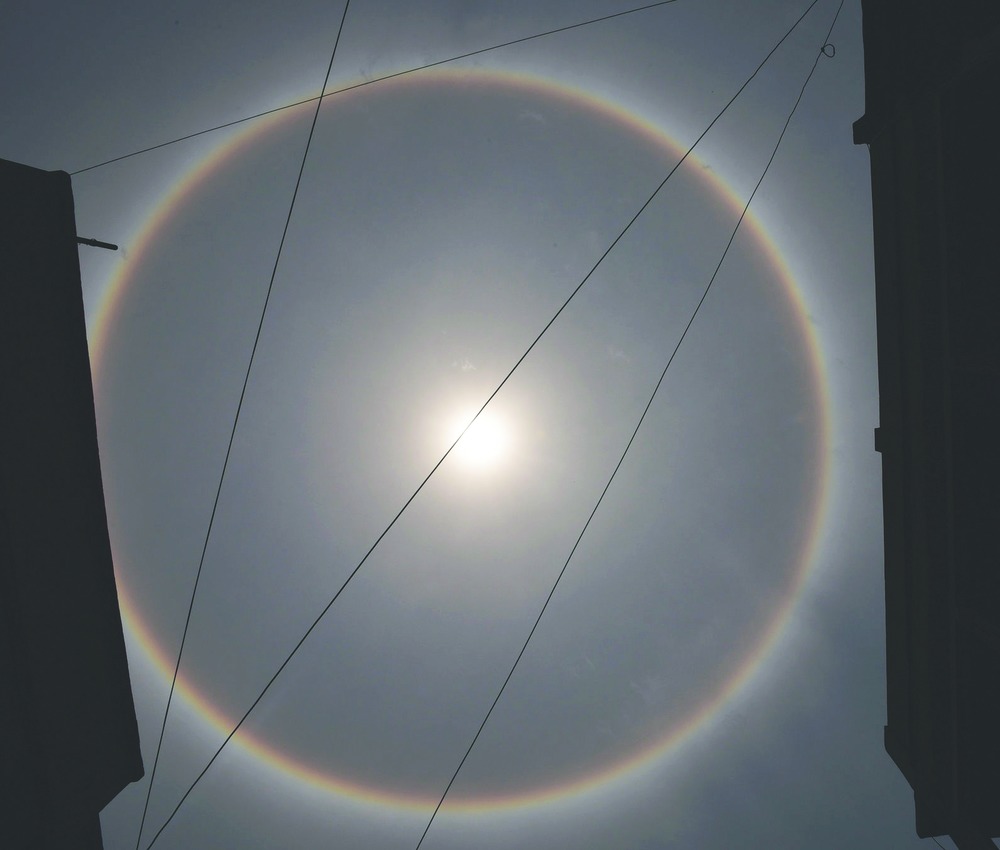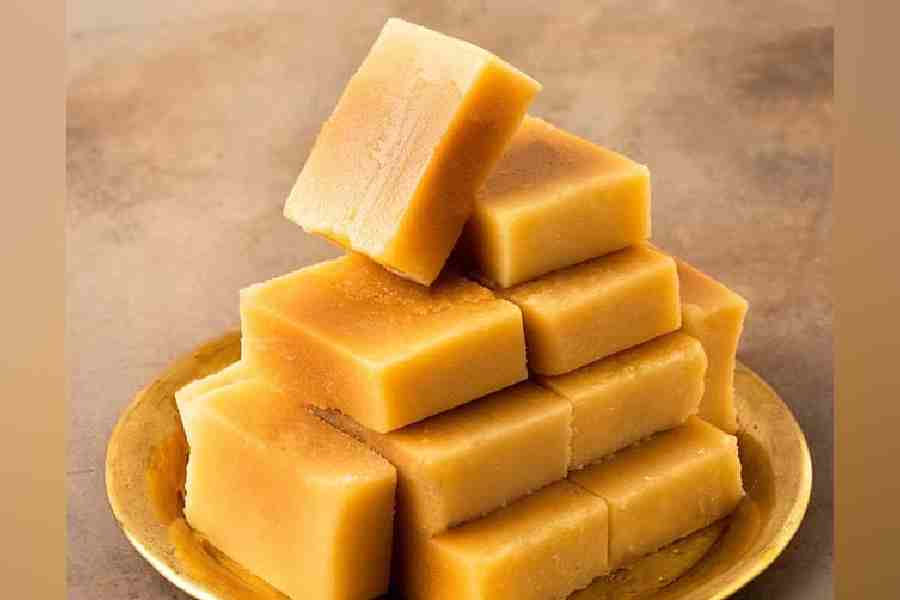
Calcuttans getting their fingers inked on Saturday started pointing to the sky when a ring of light appeared around the sun around midday. Cellphones started clicking on the streets and the shots got posted on social media, triggering animated discussions linking the celestial phenomenon with the possible outcome of the polls.
Professor Somak Raychaudhury, director of the Pune-based Inter-University Centre for Astronomy and Astrophysics, explained the occurance to Sudeshna Banerjee.
What was this ring of light around the sun?
When the overhead sun's rays pass through hexagonal ice crystals suspended in air (or in high cirrus clouds during the summer in India), they get twice refracted within these crystals, and emerge at an angle of about 22 degree. The different colours of light are deviated slightly, so the ray emerges as a rainbow-coloured ring. Together, these rays appear as a coloured ring around the sun. It is called the solar halo or the 22 degree halo.
How is it different from a rainbow?
There are two major differences. First, rainbows are caused by water droplets suspended in the air after a shower. The solar halo is caused by ice crystals. Second, the rainbow appears to us on the opposite side of the sky from the sun. This is because sunlight gets reflected within the rainwater droplets before reaching us, so the sun needs to be behind us when we see a rainbow.
The solar halo happens because of sunlight passing through ice crystals, so the sun needs to be high in the sky behind the cloud of ice crystals. The halo was seen in Calcutta around midday when the sun was overhead.
Like a halo, a rainbow is also circular, but because it happens when the sun is low in the sky, and the rainbow is consequently close to the horizon, we see it as semicircular.
A halo is more common than rainbows in cold places. Even in tropical regions, it is certainly not a rarity.
What are the conditions required for a solar halo to form in a tropical area?
A high and wispy thin cloud cover very high up in the sky, and a bright midday sun, just as Calcutta experienced today. Clouds in lower strata that bring rain are laden with liquid water drops which cannot cause haloes. Water droplets are near spherical, whereas haloes need hexagonal crystals.
Thin sheets of high cirrus clouds, between 6-10km in height, which are altitudes of the highest point of flight paths of most aeroplanes, where the temperature is around -30 or -35ºC, are full of icicles. Around midday, when the sun is overhead, if its light passes though the thin layer of icicles, then we see a nice halo all around the sun. In cold areas, where the air can be full of ice crystals even at lower strata, this phenomenon is more frequent. For a halo to form, the cloud has to be thin for the light to pass through.
Does a halo forecast rain or storm?
Icy cirrus clouds never produce rain. But they often indicate moisture high up in the air which might trigger weather change within 48-72 hours.










